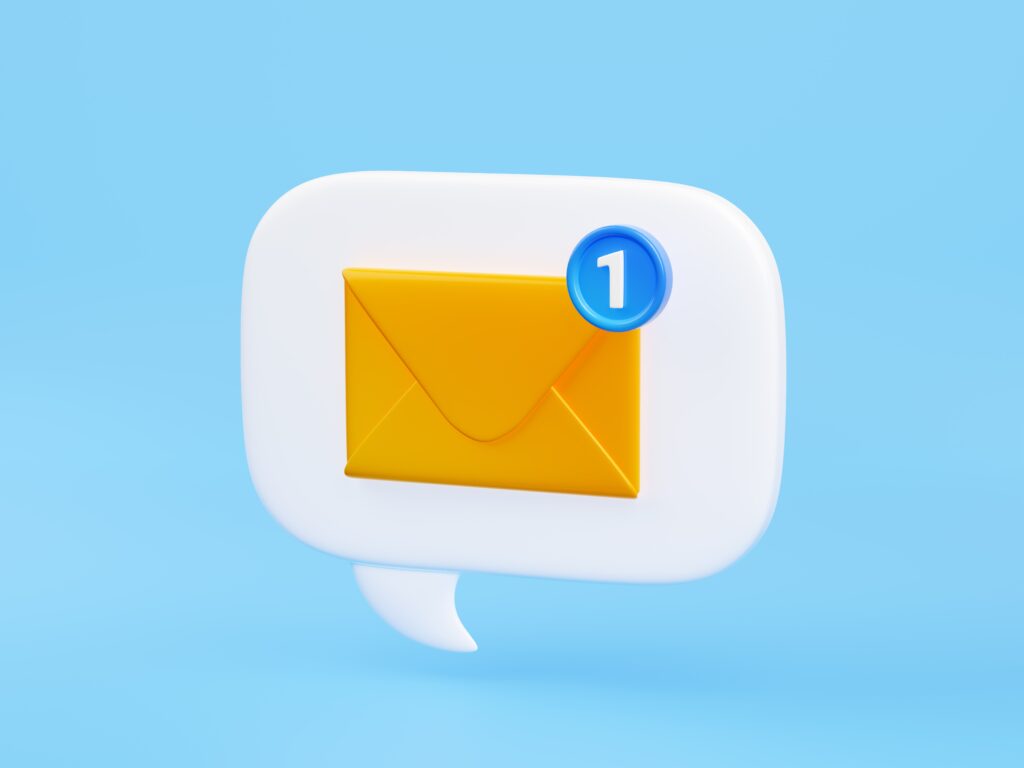
In the ever-evolving world of digital marketing, where every click, open, and conversion counts, one fact remains undeniable: timing is everything. Picture this – you’ve meticulously crafted a compelling email, your graphics are on point, your message is clear and persuasive, but if you send it at the wrong moment, it might just get lost in the digital ether, never to be seen or acted upon.
In today’s digital landscape, email marketing continues to reign as one of the most powerful tools for businesses to connect with their audience. Yet, as the sheer volume of emails flooding our inboxes continues to soar, mastering the art of timing has become a mission-critical aspect of any successful email marketing strategy.
Consider this intriguing statistic: according to a recent study, the average office worker receives a staggering 121 emails each day. That’s an inbox that’s practically bursting at the seams! So, in a world where attention spans are fleeting and inboxes are inundated, how can you ensure that your carefully crafted email lands in the right place at the right time and captures your audience’s attention?
This is where the intricate dance of timing in email marketing takes center stage. From the moment you hit that “send” button, the clock starts ticking, and the decision of when your email arrives in your recipient’s inbox can make all the difference. It can be the distinction between your message being read, clicked, and acted upon, or it fading into obscurity, lost amidst the sea of unread messages.
In this article, we will delve deep into the world of email marketing timing, exploring why it’s a pivotal factor in your marketing success, and providing you with the knowledge and tools you need to make well-informed decisions about when to send your emails. Get ready to unlock the secrets of perfect timing and take your email marketing campaigns to new heights of engagement and effectiveness. Let’s embark on this journey to discover when’s truly the best time to send email.

Understanding the Email Engagement Curve
Email marketing isn’t just about crafting the perfect message or designing eye-catching visuals; it’s also about sending that message at the right moment. The concept of the “email engagement curve” is a powerful tool for grasping the dynamics of when your audience is most receptive to your emails and email subject line.
Concept of the Email Engagement Curve:
The email engagement curve is a graphical representation of how email open rates and click-through rates (CTR) fluctuate over time, typically throughout the day and week. It reflects the ebb and flow of your audience’s responsiveness to your emails based on when they receive them. Understanding this curve is pivotal because it guides you in determining the optimal times for sending your emails to maximize engagement and interaction.
Email Open Rates and Click-Through Rates Variation:
- Throughout the Day: Email engagement isn’t a static phenomenon; it experiences peaks and valleys during different parts of the day. For instance, the morning may see a surge in email opens as people check their inboxes before work. However, the afternoons could witness a dip as the workday progresses. Evenings, on the other hand, might see another spike as individuals catch up on their personal emails.
- Throughout the Week: Just as with daily variations, email engagement also fluctuates across the days of the week. Traditionally, Tuesdays and Thursdays are considered prime days for sending promotional emails because they often yield higher open rates. However, the best days for engagement may vary based on your industry and target audience.
Data and Statistics:
Data and statistics vividly illustrate the significance of timing in email marketing:
- According to a study by Experian, emails sent on Tuesdays had the highest open rates, making it the most effective day for email engagement, with Thursday coming in second.
- Campaign Monitor’s research found that emails sent between 10 am and 2 pm often result in higher open and click-through rates. People tend to be more responsive during these hours.
- Litmus, an email analytics company, reported that open rates tend to drop during the weekend, particularly on Sundays, which is often seen as a less favorable day for email marketing.
- A study by GetResponse found that the best time to send emails depends on the industry. For instance, emails sent in the finance industry were most successful when sent on Tuesdays, whereas the fitness industry saw better results on Thursdays.

Factors Influencing Email Timing
The quest to determine the best time to send emails is more complex than it may initially appear. The ideal send time can vary significantly based on several factors, each of which can influence when your audience is most receptive to your messages. Let’s delve into these influential factors and understand why they matter:
- Industry:
- Different industries have distinct patterns when it comes to email engagement. For example, B2B (business-to-business) companies might find that their emails perform better during standard office hours, while B2C (business-to-consumer) companies may see higher engagement during evenings and weekends when consumers have more leisure time.
- Audience Demographics:
- Understanding your audience’s characteristics is paramount. Age, occupation, and lifestyle all play a role in determining when people are most likely to check their emails. For instance, younger audiences may be more active on email during non-traditional hours, such as late evenings.
- Geographic Location:
- Geography matters. If your audience spans different time zones or countries, it’s crucial to consider the local time of your recipients. Sending emails at times convenient for the majority of your audience can significantly impact open and click-through rates.
- Audience Behavior:
- Analyzing your audience’s behavior can uncover patterns. For instance, do they tend to check emails during their morning commute, lunch breaks, or before bedtime? Identifying these habits can help you tailor your send times accordingly.
- Type of Email:
- The purpose of your email matters. Transactional emails, like order confirmations or shipping updates, may require immediate delivery, while promotional emails can benefit from being sent during peak engagement hours.

Emphasizing Audience Segmentation:
One key takeaway from considering these factors is the importance of audience segmentation. Not all subscribers are the same, and segmenting your email list based on demographics, behavior, and engagement patterns allows you to send targeted messages at the most opportune times.
For example, a clothing retailer may segment its list into categories like “Men’s Fashion,” “Women’s Fashion,” and “Accessories.” They might find that women in their 30s engage more with emails sent on weekday evenings, while men of the same age group prefer weekend mornings. By segmenting and adapting send times accordingly, the retailer can boost overall engagement and sales.
Real-Life Examples and Case Studies:
Consider the case of an e-commerce company that decided to experiment with email timing. After analyzing its data, the company discovered that its audience, primarily young professionals, responded best to emails sent on Tuesday evenings, aligning with their after-work leisure time. By making this adjustment, the company saw a significant increase to the highest open rates and conversions.
Another case involves a global software company with customers spanning various continents. Through meticulous audience segmentation and strategic send times tailored to each time zone, they achieved a 25% increase in click-through rates compared to their previous generic send times.
These real-life examples underscore the tangible impact of timing on email performance. They demonstrate that the effort invested in understanding your audience and aligning send times with their preferences can yield substantial rewards in terms of engagement and conversion rates.

Analyzing Email Marketing Benchmarks
When it comes to email marketing, data is your guiding star, and benchmark data is your compass. Understanding the significance of benchmark data is pivotal in determining the best send times for your email campaigns. It not only helps you gauge your own performance but also allows you to fine-tune your email timing strategies for optimal results.
Significance of Benchmark Data:
Benchmark data provides a frame of reference for your email marketing efforts. It offers insights into how your campaigns compare to industry standards and the performance of your competitors. Here’s why benchmark data is essential:
- Performance Evaluation: Benchmarks help you evaluate your email campaigns objectively. By comparing your open rates, click-through rates, and conversion rates to industry averages, you can identify areas for improvement.
- Competitive Analysis: Understanding how your competitors are faring in the email marketing landscape can give you a competitive edge. Benchmark data allows you to assess your position in the market.
- Goal Setting: Benchmarks serve as realistic benchmarks for setting achievable goals. They help you establish performance targets that are in line with industry standards.
Industry-Specific Email Marketing Benchmarks:
Email marketing benchmarks can vary significantly by industry. Here are some industry-specific email marketing benchmarks and statistics you might encounter:
- E-commerce: In this highly competitive sector, the average email open rate hovers around 15-20%, with click-through rates ranging from 2-5%. Conversion rates typically range from 1-5%.
- Financial Services: The finance industry often sees lower open rates (around 10-15%) but higher click-through rates (4-7%) and conversion rates (3-7%).
- Healthcare: Healthcare email campaigns tend to have open rates between 20-25%, click-through rates of 2-5%, and conversion rates averaging 2-5%.
- Technology: The technology sector may experience open rates of 15-20%, click-through rates of 2-5%, and conversion rates of 1-5%.
Using Benchmark Data to Refine Email Timing Strategies:
- Identify Trends: Examine benchmark data to identify trends within your industry. Are there particular days or times that consistently outperform others? Use these trends as a starting point for your email timing experiments.
- Competitive Analysis: Analyze how your competitors’ email campaigns are performing concerning industry benchmarks. This can help you uncover opportunities to differentiate your timing strategy.
- A/B Testing: Benchmark data can guide your A/B testing efforts. For example, if you notice that the industry average for open rates is highest on Tuesdays, consider conducting A/B tests to compare the performance of emails sent on Tuesdays with those sent on other days.
- Segmentation: Segment your email list based on recipient characteristics (e.g., location, job role, engagement history) and analyze how different segments respond to various send times. Benchmark data can help you set performance expectations for each segment.
- Iterative Improvements: Continuously monitor your email campaigns and compare your results to industry benchmarks. Use this iterative approach to make data-driven adjustments to your send times and strategies.

Finding Your Ideal Send Times
Discovering the ideal email send time for your email campaigns is a crucial step in maximizing engagement and conversions. While there’s no one-size-fits-all answer, the following step-by-step guide will help businesses uncover their ideal send times:
Step 1: Understand Your Audience:
- Start by gaining a deep understanding of your target audience. Analyze their demographics, behavior, and preferences. Are they professionals who check emails during work hours, or are they consumers who engage during evenings and weekends?
Step 2: Segment Your Email List:
- Divide your email list into segments based on characteristics such as location, job role, engagement history, and purchase behavior. Each segment may have different ideal send times.
Step 3: Study Your Data:
- Analyze your historical email performance data. Identify trends, patterns, and correlations between send times and open rates, click-through rates, and conversion rates. Look for days and times that consistently outperform others.
Step 4: Industry Benchmarks:
- Refer to industry benchmarks to gain insights into when your competitors and peers are sending their emails. While not definitive, this can provide a useful starting point.
Step 5: Conduct A/B Testing:
- A/B testing (split testing) is a cornerstone of discovering ideal send times. Create two or more versions of an email and email subject line, each with a different send time, and randomly send them to different segments of your audience. Measure the performance of each version to determine which send time yields the best results.
Step 6: Analyze Email Performance:
- After conducting A/B tests, thoroughly analyze the results. Pay attention to open rates, click-through rates, and conversion rates. Identify which send times consistently lead to higher engagement and conversions.
Step 7: Iterate and Refine:
- Email marketing is an ongoing process. Continuously refine your send times based on the insights gained from A/B testing and performance analysis. Don’t be afraid to experiment with different send times to find the sweet spot.
Practical Tips and Tools for Testing and Optimizing Send Times:
- Email Marketing Platforms: Most email marketing platforms offer A/B testing features that allow you to easily experiment with different send times.
- Use Heatmaps: Some email marketing tools provide heat maps that show when recipients are most active in their inboxes. Use this data to guide your send time decisions.
- Consider Time Zones: If your audience spans multiple time zones, consider segmenting your list and sending emails at times that align with each time zone.
- Regularly Review Data: Set aside time at regular intervals (e.g., quarterly) to review your email performance data and adjust your send times accordingly.
- Engage with Your Audience: If possible, engage with your audience directly through surveys or feedback forms to understand their preferred email reading times.
- Stay Updated: Email behavior can change over time. Stay up-to-date with the latest email marketing trends and adjust your strategy as needed.

Conclusion
In the world of email marketing, timing truly is everything. As we’ve explored in this article, understanding the intricacies of the email engagement curve, considering factors that influence email timing, and leveraging benchmark data and testing can make all the difference in your email marketing success. By tailoring your email send times to your audience’s habits and preferences, you can elevate your campaigns to new levels of engagement and effectiveness. Remember, in the fast-paced digital landscape, being at the right place at the right time can make your message stand out and capture your audience’s attention. So, make timing and email subject lines your ally, and watch your email marketing efforts flourish.



